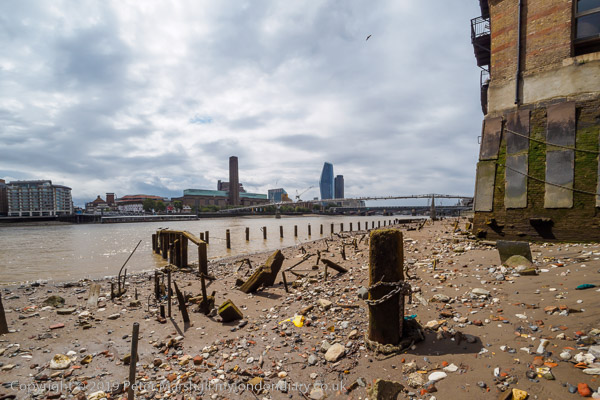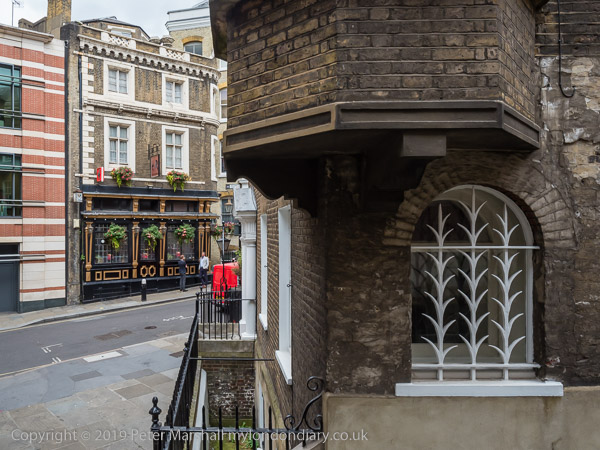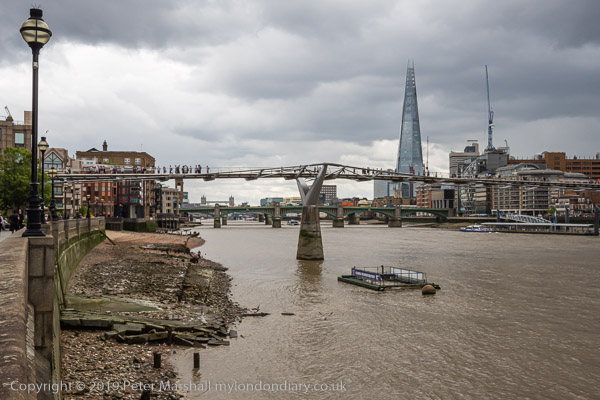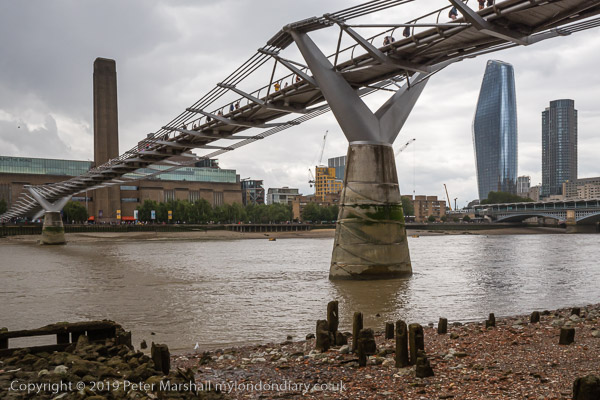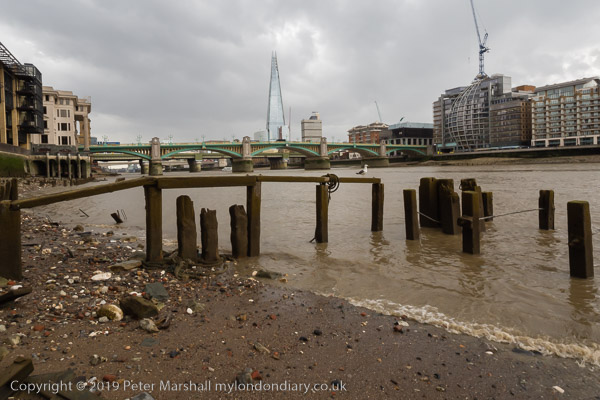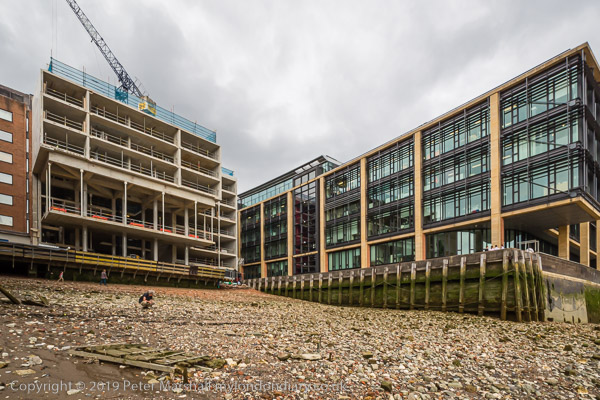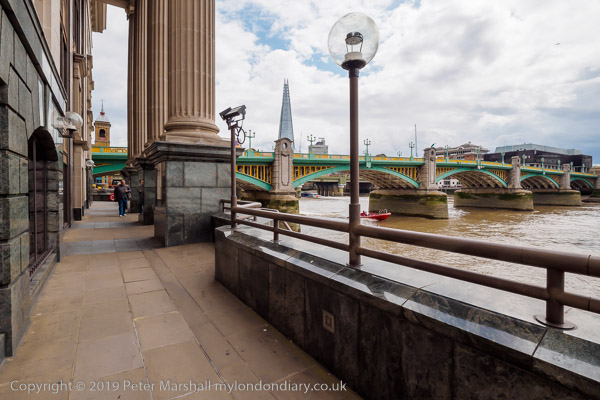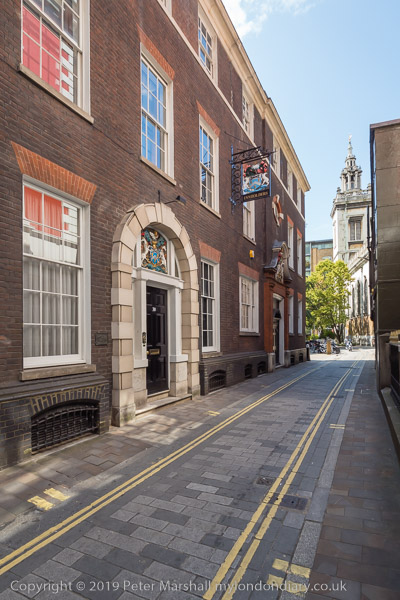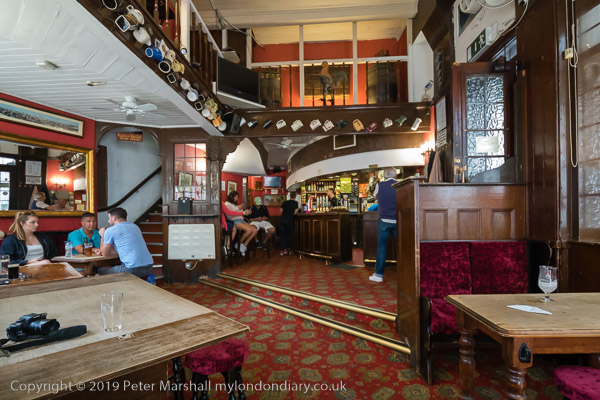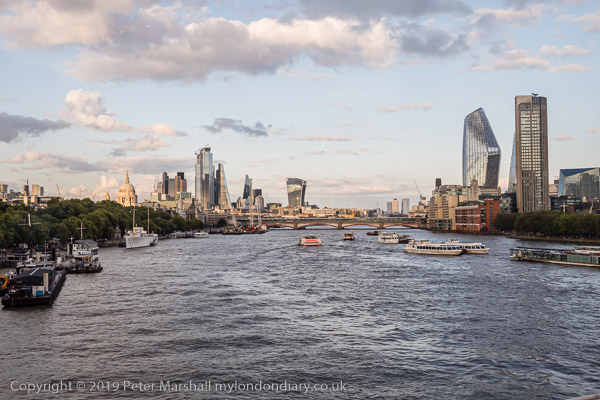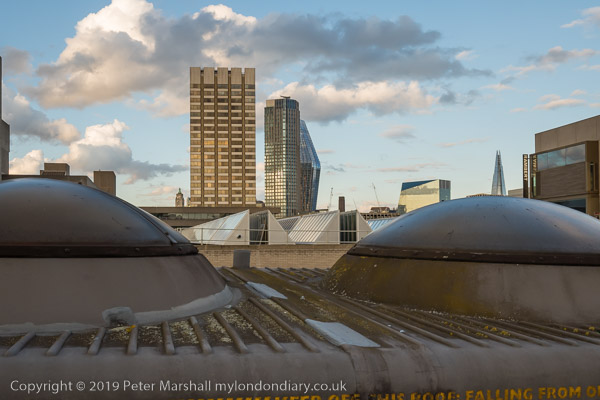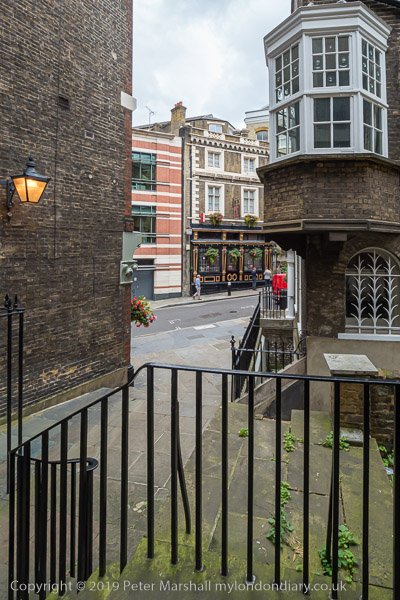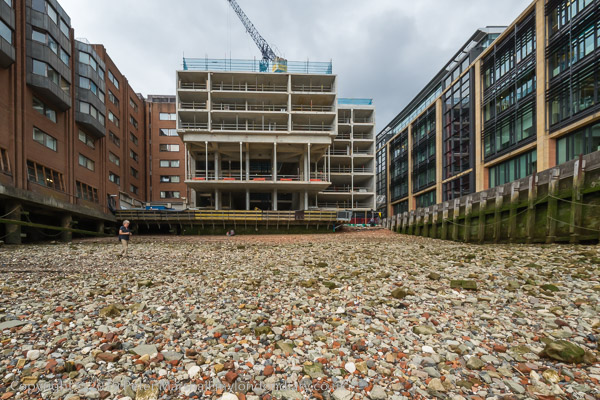Southwark Housing, Bermondsey & Rembrandt: On Thursday October 16th 2014 I photographed a march from the Elephant to Southwark Council Offices over the borough’s housing scandals, took some time off in Bermondsey to take some panoramic images and then covered a protest at the National Gallery against sponsorship of art exhibitions by companies such as Shell, G4S, BP and Serco.
Compulsory Purchase Orders for Southwark Councillors
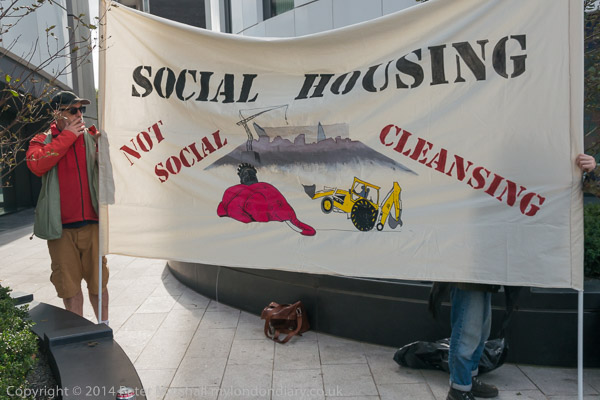
Housing campaigners from Southwark marched from the Elephant and Council to Southwark Council Offices to serve ‘People’s Compulsory Purchase Orders‘ on the homes of the Council leader and other councillors who they say have accepted gifts from developers to sell off council estates at knockdown prices.

The shameful demolition of over 1200 homes in and close to the well-designed and largely popular Heygate estate has cost the borough dearly, with the costs to the council of ‘decanting’ the residents exceeding the knock-down price it charged the developers.

Of course the estate residents suffered more, losing their homes and being forced to move further out into the suburbs. Leaseholders were only offered roughly half the true market value of property in the area.
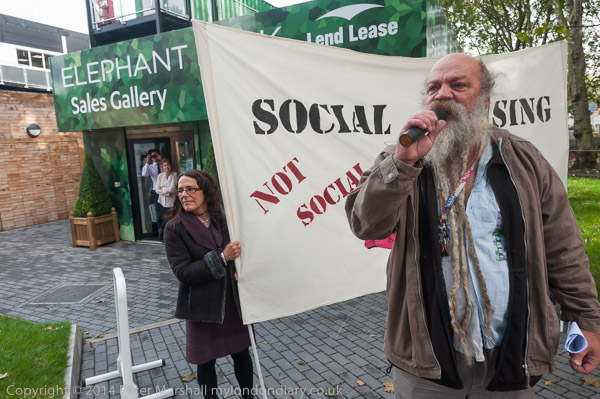
The demolition and redevelopment has meant the loss of over a thousand social homes, and the new properties on the site had already been advertised to overseas buyers in Singapore and elsewhere as second homes, investment properties, homes for wealthy overseas students studying here, buy-to-let etc. There are just a few so-called affordable units at 80% of market rates, still well above what most Londoners can actually afford.

The protesters met at the base of the Strata Tower, an ugly development of largely luxury flats with three wind turbines built into its roof for show – unable to produce electricity as when running they produce excessive vibration in flats at the top of the building. Facing them ‘One The Elephant‘ was going up, a 44 storey block of luxury flats with no social housing, and is being sold abroad, with ‘studio flats’ starting at around £320,000 or 640,000 Singapore dollars.

Southwark campaigners were joined by members of the Focus E15 ‘Housing for All campaign’ and their first stop for a brief protest was the Elephant Park Sales Office on the Walworth Rd. They then walked through several council estates to the north of the New Kent Road which are also attractive targets for developers who can make huge profits by demolishing them and building high price flats at much higher densities.

They continued through other council estates in the area to London Bridge Station and on to the council offices in Tooley Street, where they were stopped by security from entering the Council offices. Police were called and after much argument two of the campaigners who were Southwark residents were allowed in and waited to present letters containing ‘People’s Compulsory Purchase Orders’ for their homes to council leader Peter John and two other councillors.

They asked at reception to see the councillors and were told to take a seat and wait. They waited and waited. Eventually someone from the council came to tell them that all three named councillors were unavailable but took their letters promising to hand them over personally to them.
More at CPOs for Southwark Councillors.
Bermondsey Thames Panoramas – City Hall to Angel Wharf

I had some time before my next protest and took a short walk by the River Thames,

beginning in Potters Fields where ‘One Tower Bridge’ was going up close to City Hall.

Past Tower Bridge I took a short walk on the foreshore in front of Butler’s Wharf before continuing along Shad Thames and across the footbridge over St Saviour’s Creek.

I continued along the Thames Path past the moorings, and got as far as Angel Wharf before I realised I needed to catch a bus to get me back to Trafalgar Sqaure in time for my next event.
More pictures Bermondsey Thames Panoramas
Art Not Oil Rembrandt Against Shell – National Gallery
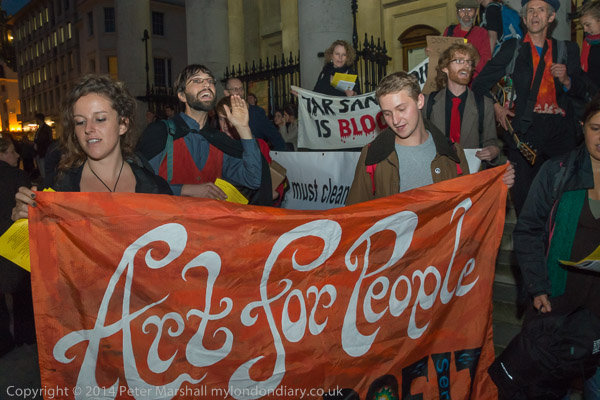
The Art Not Oil coalition had gate-crashed the press launch of the National Gallery’s Rembrandt exhibition to give a brief performance protesting against oil sponsorship of the arts and privatisation of gallery staffing.
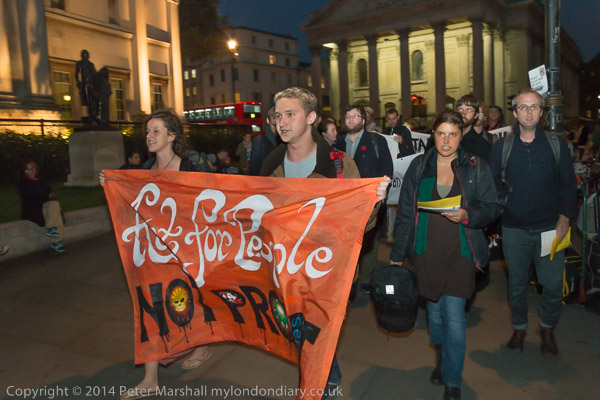
On the evening of 16th October they met on the steps of St Martin-in-the-Fields before marching the few yards to give a repeat performance outside the gallery which was then holding a gala evening for special guests and highly ranked staff.
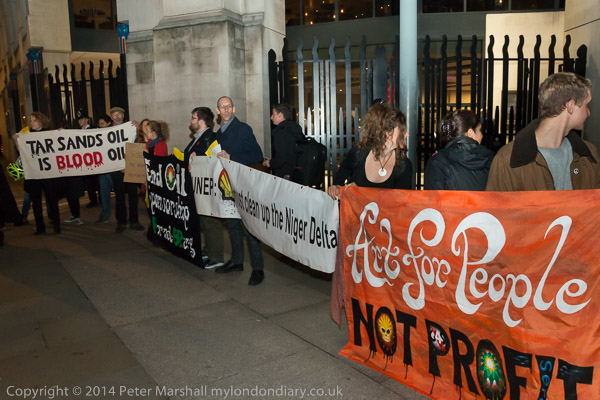
The National Gallery was making plans to privatise up to two thirds of the gallery staff and this exhibition was being guarded by a private security firm rather than the gallery’s own staff.
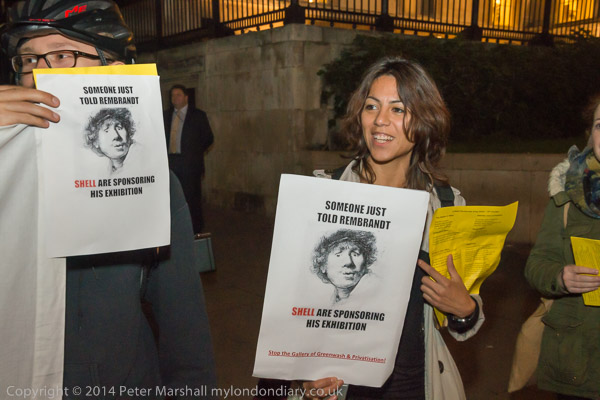
Art Not Oil held banners and placards and handed out flyers agains the sponsorship by Shell stating:
"The presence of unethical sponsors like Shell and the contracting of external security firms shows the growing influence the private sector is having over our arts and culture. With its meagre contribution to the gallery, Shell is buying social legitimacy for its dodgy deeds worldwide, including:
- its failure to clean up its multiple spills in the Niger Delta
- its reckless plans to drill in the Arctic for yet more oil
- its tar sands projects in Canada that are undermining Indigenous people's rights"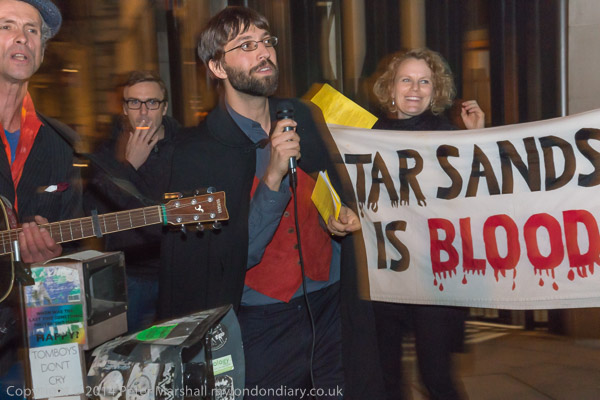
They sang a number of specially written songs and performed the short playlet they had previously given inside the gallery during the press launch.
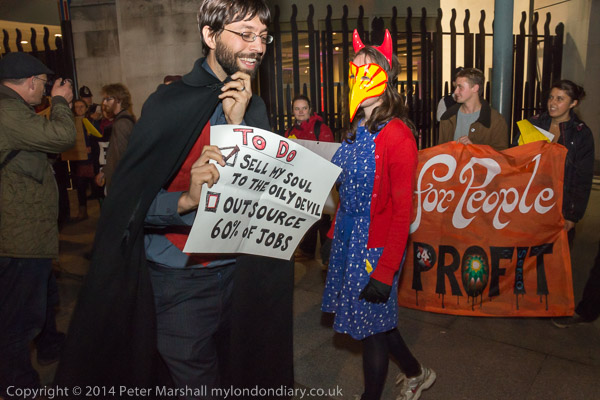
More at Art Not Oil Rembrandt Against Shell.
Flickr – Facebook – My London Diary – Hull Photos – Lea Valley – Paris
London’s Industrial Heritage – London Photos
All photographs on this page are copyright © Peter Marshall.
Contact me to buy prints or licence to reproduce.
